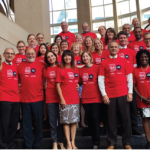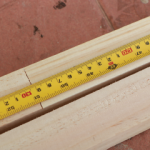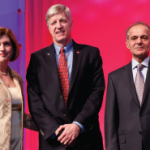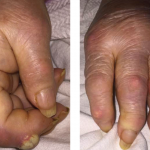New data shows that both private and public rheumatology practices benefit financially by hiring non-physician providers (NPPs). But when should practices hire NPPs?


New data shows that both private and public rheumatology practices benefit financially by hiring non-physician providers (NPPs). But when should practices hire NPPs?

Managing weight loss through diet may help patients with rheumatic disease reduce inflammation. Here are some strategies on weight loss and eating for rheumatologists and patients…

Duzallo, a combination of lesinurad and allopurinol, was approved by the FDA in August to treat hyperuricemia associated with gout…

Sharad Lakhanpal, MBBS, MD |
Wider awareness and understanding of the more than 100 different rheumatic diseases is a vital element in our work as rheumatologists and rheumatology health professionals. Stimulating interest and engagement among lawmakers, patient groups and the public at large is essential to successful advocacy efforts, as well as the overall future of our specialty. This September,…

MADRID—Determining what is a best practice in rheumatology and then implementing improvements based on what you find can be fraught with complexity, an expert said during the 2017 Annual European Congress on Rheumatology (EULAR). Examples are emerging of benchmarking projects in which electronic registers are used to improve patient care, said William Dixon, MD, chair…

Elderly patients have unique requirements with regard to treatment for pain, rheumatic disease and other ailments. Collaboration between rheumatologists, geriatricians and primary care physicians is essential to avoid unnecessary interventions and improve care for this patient population…
Maarten Boers, MSc, MD, PhD |
I read with interest the articles in the June issue of The Rheumatologist pertaining to high drug costs. Simon Helfgott rheuminated on it, and Susan Bernstein, a medical journalist, wrote a two-page article titled “Concerns About Cost.” Both articles were thoughtful summaries of a complex issue, putting large question marks over both initial prices and…
MADRID—Determining what is a best practice in rheumatology and then implementing improvements based on what you find can be fraught with complexity, an expert said during the 2017 Annual European Congress on Rheumatology (EULAR). Examples are emerging of benchmarking projects in which electronic registers are used to improve patient care, said William Dixon, MD, chair…

When it was created in 1982, the Division of Rheumatology and Immunology at the University of Nebraska Medical Center comprised one-and-a-half rheumatologists: its founder, Lynell W. Klassen, MD, MACR, and Gerald Moore, MD, who later received formal training at the NIH and now serves as senior associate dean for academic affairs. Thirty-five years later, the…

Mark Vercel, DO, Kim Reinhart, OMS-3, & Amita Thakkar, MD |
As a manifestation of hyperuricemia, inflammatory bullous lesions have rarely been described in the past century. A more classic presentation of hyperuricemia is acute inflammatory gouty arthritis, characterized by the deposition of monosodium urate crystals. Other complications of chronic untreated hyperuricemia may include polyarticular arthritis, tophus formation and possible chronic destructive lesions of the bone,…